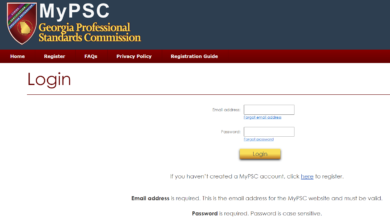
In an era where decision-making demands precision and transparency, especially in education, corporate assessments, and project management, the need for structured evaluation tools has never been greater. Among these tools, “Rub Ranking” stands out as a robust method for evaluating performance, ideas, or outputs systematically and fairly. This article offers a comprehensive guide to Rub Ranking—its definition, applications, benefits, and how to implement it effectively.
What is Rub Ranking?
Rub Ranking is a hybrid evaluation approach that combines the principles of a rubric and ranking. It brings together the detailed, criterion-based assessment style of a rubric with the comparative prioritization of ranking systems. This dual-layered evaluation strategy allows users to assess subjects based on predefined metrics while also ordering them by overall quality or relevance.
Components of Rub Ranking
- Criteria Definition
The first step in Rub Ranking involves establishing clear and measurable criteria. These are the standards against which each subject (e.g., essay, proposal, product) will be judged. - Scoring Levels
Each criterion is accompanied by a scale (e.g., 1 to 5 or descriptive levels like “Poor” to “Excellent”), which helps in quantifying performance. - Weight Assignment
Criteria can be weighted according to their importance. This ensures that more critical factors influence the overall evaluation more heavily. - Aggregate Scoring
Scores across all criteria are compiled to give a total score for each subject. - Ranking
Finally, subjects are ranked based on their total scores, allowing evaluators to see how they compare in terms of overall performance.
Applications of Rub Ranking
- Education: Teachers use Rub Ranking to assess student assignments, projects, and presentations more consistently.
- Hiring and Promotions: HR professionals utilize this method to compare job candidates or evaluate employee performance.
- Grant and Proposal Evaluation: Organizations use it to assess the merit and feasibility of various applications.
- Product Design and Development: Teams can prioritize features or versions based on structured input from diverse stakeholders.
Benefits of Rub Ranking
- Objectivity and Fairness
By evaluating each subject on the same set of criteria, Rub Ranking minimizes bias and supports transparent decision-making. - Comparative Insight
The ranking component reveals not only individual performance but also how each compares to the rest of the group. - Enhanced Feedback
Detailed scoring on multiple criteria provides valuable insights for improvement. - Flexibility
It can be tailored to suit different fields and complexity levels, from classroom activities to high-stakes business decisions.
How to Implement Rub Ranking
- Define Your Objectives: Understand what you want to evaluate and why.
- Develop the Rubric: Create clear criteria and scoring guidelines.
- Assign Weights Thoughtfully: Reflect the relative importance of each criterion.
- Train Evaluators: Ensure consistency by training those who will use the rubric.
- Evaluate and Rank: Score each item, calculate total scores, and rank accordingly.
- Review and Revise: Use feedback to refine the process for future use.
Common Pitfalls and How to Avoid Them
- Overcomplicating the Rubric: Keep it concise and focused on meaningful metrics.
- Unclear Descriptors: Use specific, observable language to reduce subjectivity.
- Ignoring Stakeholder Input: Involve those impacted by the evaluation to ensure relevance and buy-in.
Conclusion
Rub Ranking offers a powerful framework for making complex evaluations manageable, transparent, and fair. By fusing detailed analysis with strategic prioritization, it enables organizations and individuals to make smarter, data-informed decisions. Whether in education, business, or creative fields, adopting Rub Ranking can transform how we assess and improve performance.
(FAQs) about Rub Ranking:
1. What is Rub Ranking in simple terms?
Rub Ranking is a structured evaluation method that combines a rubric (criteria-based scoring system) with ranking (ordering items from best to worst). It allows evaluators to assess items fairly and then determine their overall standing relative to others.
2. How is Rub Ranking different from just using a rubric?
A rubric assigns scores based on criteria but doesn’t necessarily compare items. Rub Ranking, on the other hand, not only scores each item using a rubric but also ranks them based on their total scores, helping to prioritize or select the best options.
3. Who can use Rub Ranking?
Rub Ranking can be used by:
- Educators assessing student work
- HR professionals evaluating candidates
- Managers prioritizing projects
- Grant committees reviewing applications
- Design teams comparing product concepts
4. What are the benefits of using Rub Ranking?
- Ensures fair and consistent evaluation
- Combines qualitative and quantitative judgment
- Helps in decision-making by ranking outcomes
- Encourages transparency and accountability
- Useful for both individual and group evaluations
Also Read: Https://MobileHomeExteriors.com: Explore the Latest Trends and Innovations to Transform Your Home
5. Can Rub Ranking be used for group evaluations?
Yes. Rub Ranking is ideal for evaluating multiple entries—like essays, job applications, or project pitches—by comparing and ordering them based on a structured scoring method.
6. How do you create a Rub Ranking system?
- Define clear evaluation criteria.
- Assign scoring levels to each criterion.
- Determine the weight of each criterion (if needed).
- Score each item across all criteria.
- Total the scores and rank items accordingly.
7. Is software required to perform Rub Ranking?
No, but software like Excel, Google Sheets, or specialized tools (e.g., assessment platforms) can automate scoring and ranking, making the process faster and more accurate.
8. How can bias be minimized in Rub Ranking?
- Use clear and specific criteria.
- Train evaluators for consistency.
- Use multiple evaluators and average scores.
- Blind the evaluation process when possible.
9. Can Rub Ranking be used for qualitative assessments?
Yes. Although it involves numerical scoring, qualitative judgments can be quantified using descriptive levels (e.g., “Excellent,” “Good,” “Needs Improvement”), making Rub Ranking suitable for both qualitative and quantitative data.
10. How often should a Rub Ranking rubric be updated?
It should be reviewed and updated:
- At the start of each new evaluation cycle
- When objectives or standards change
- Based on feedback from evaluators or participants




